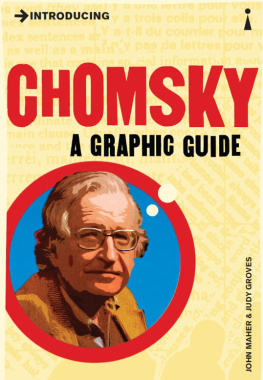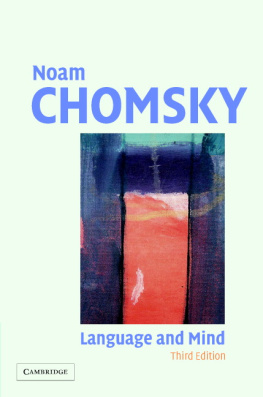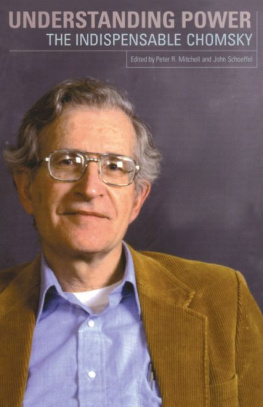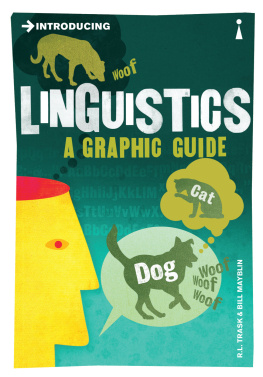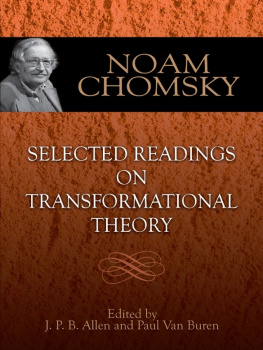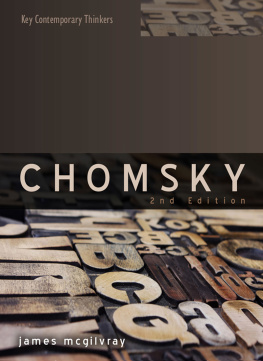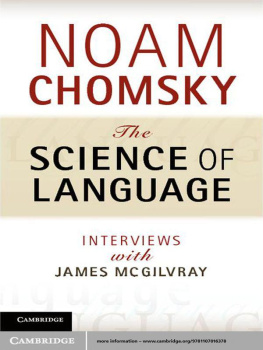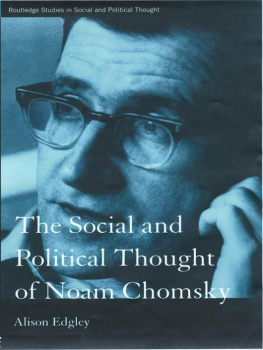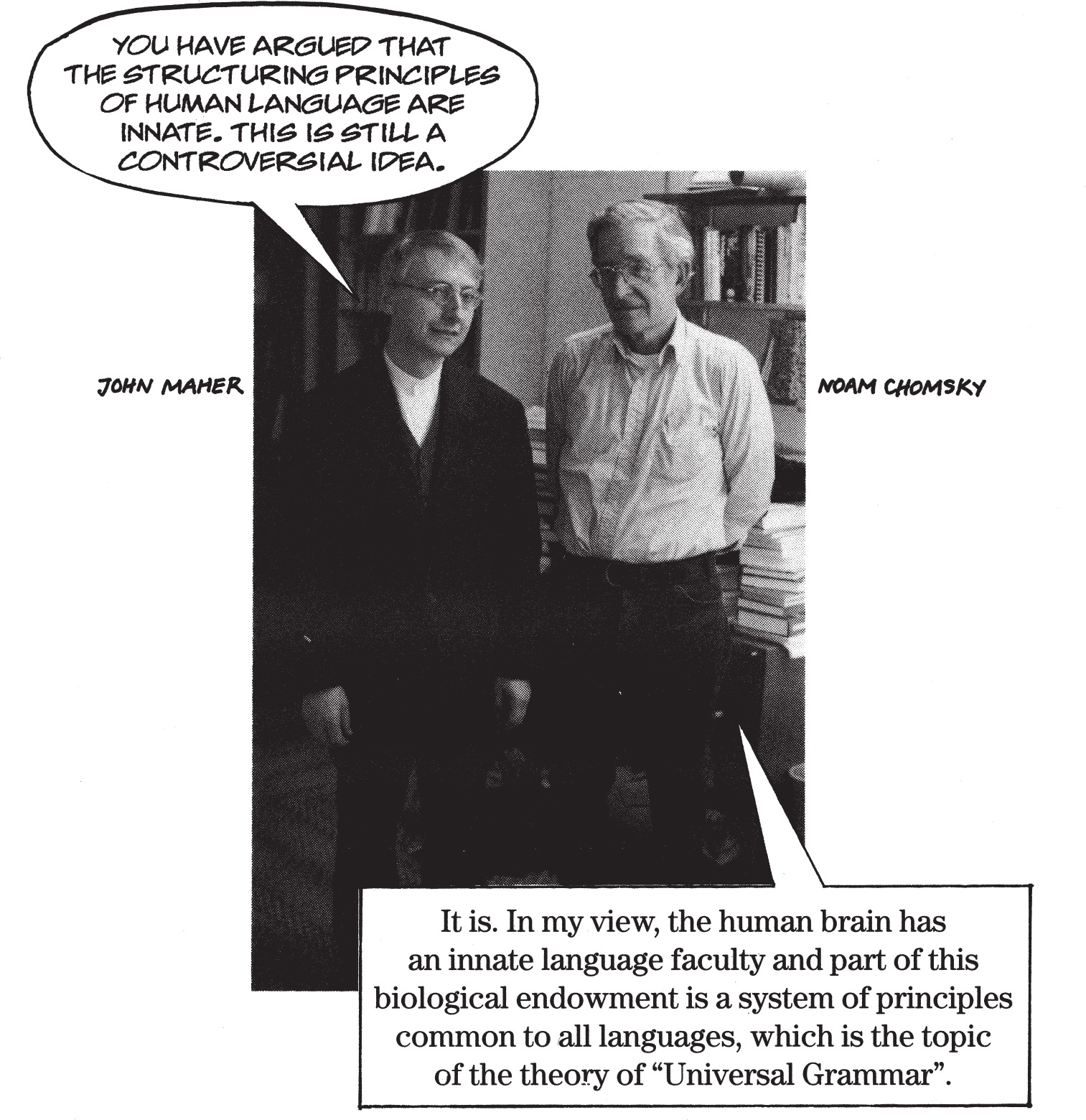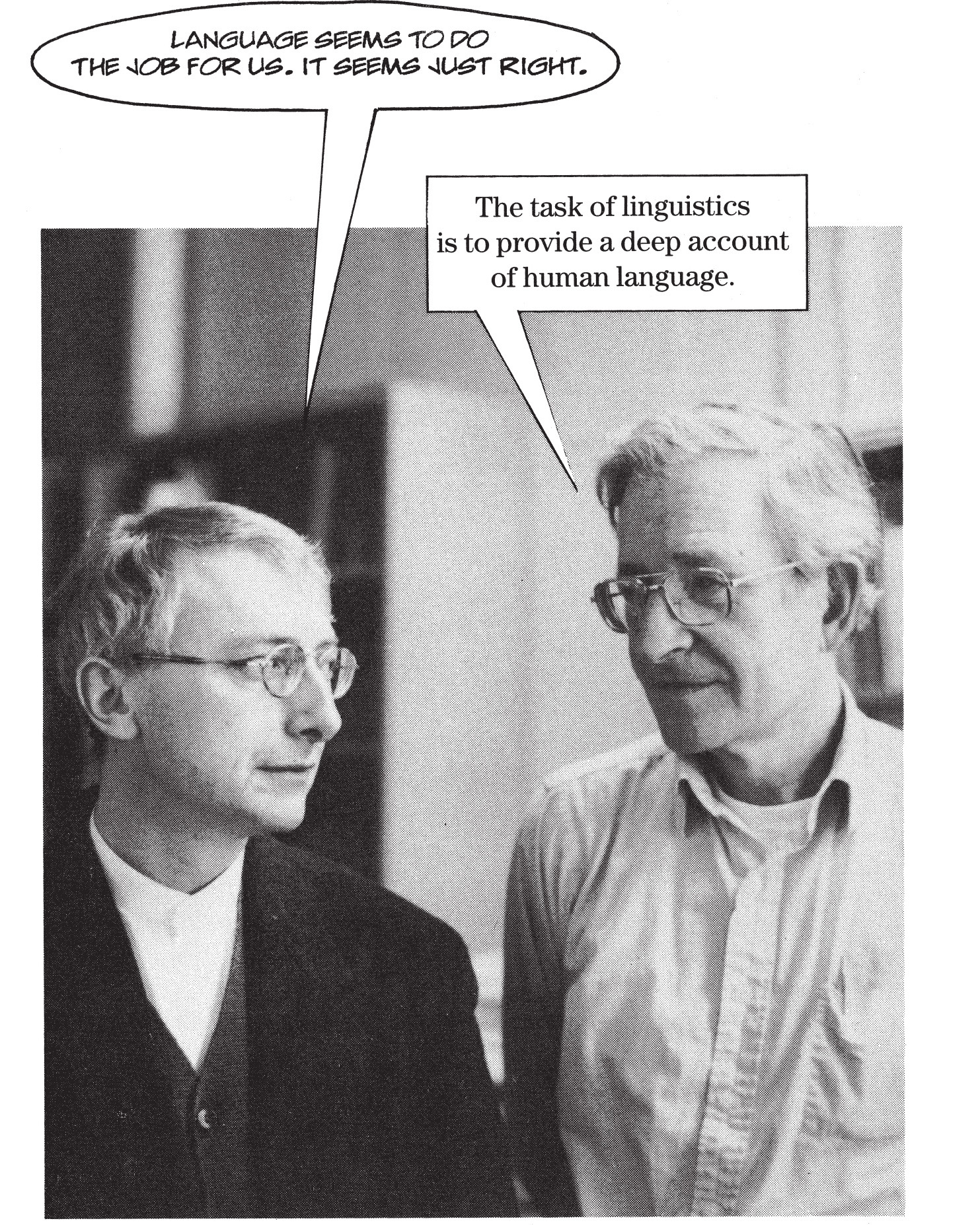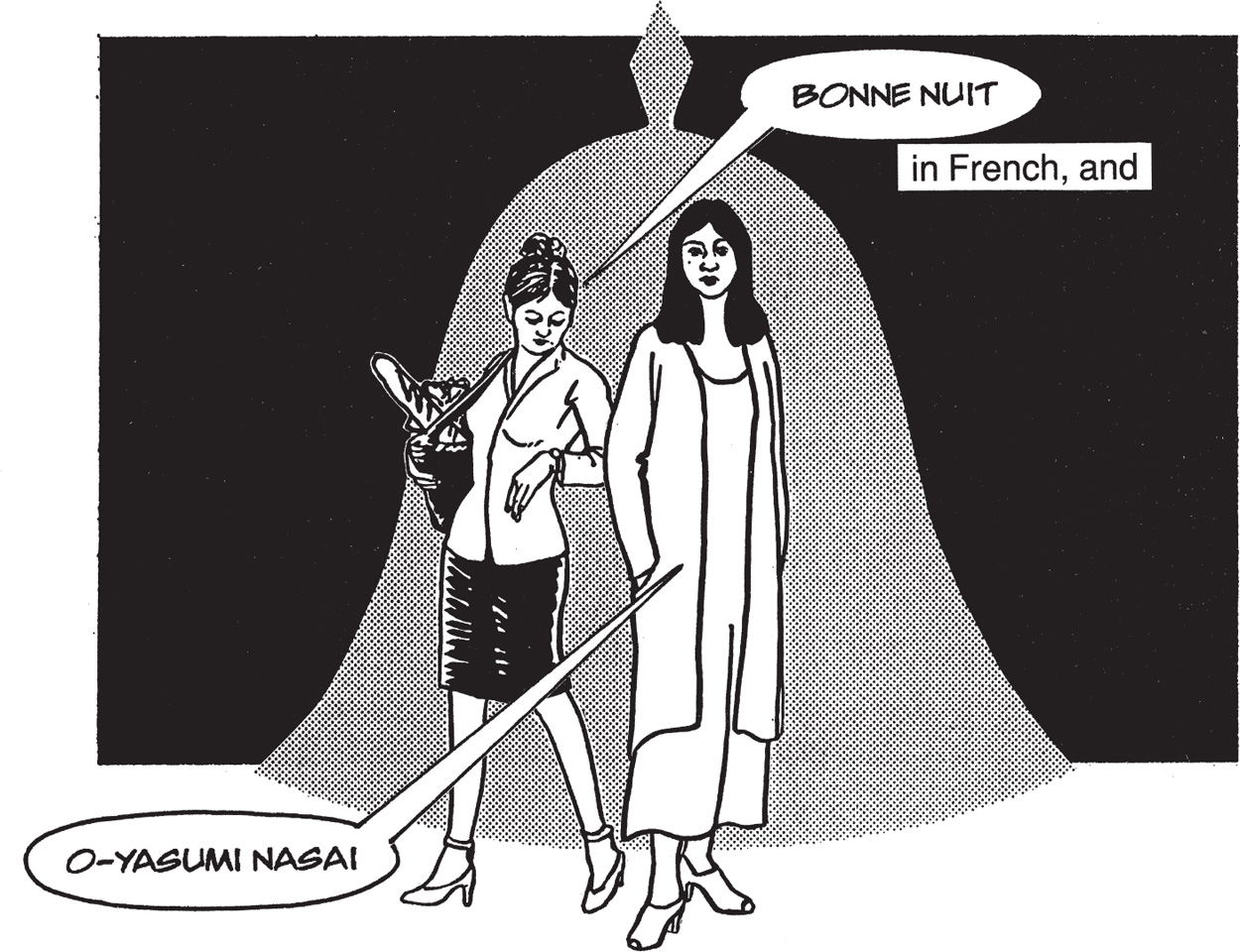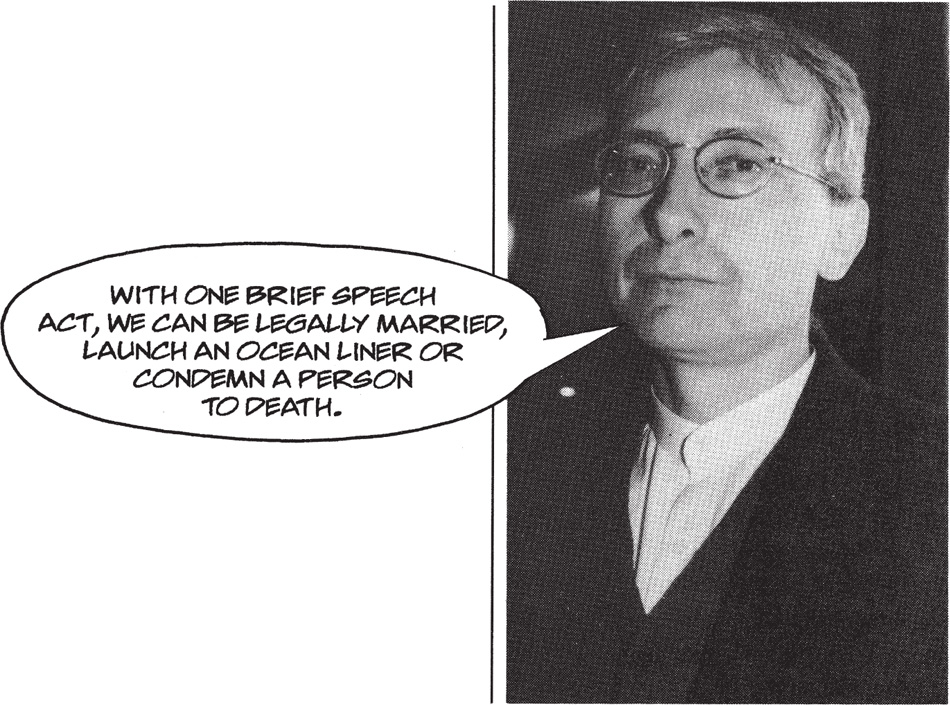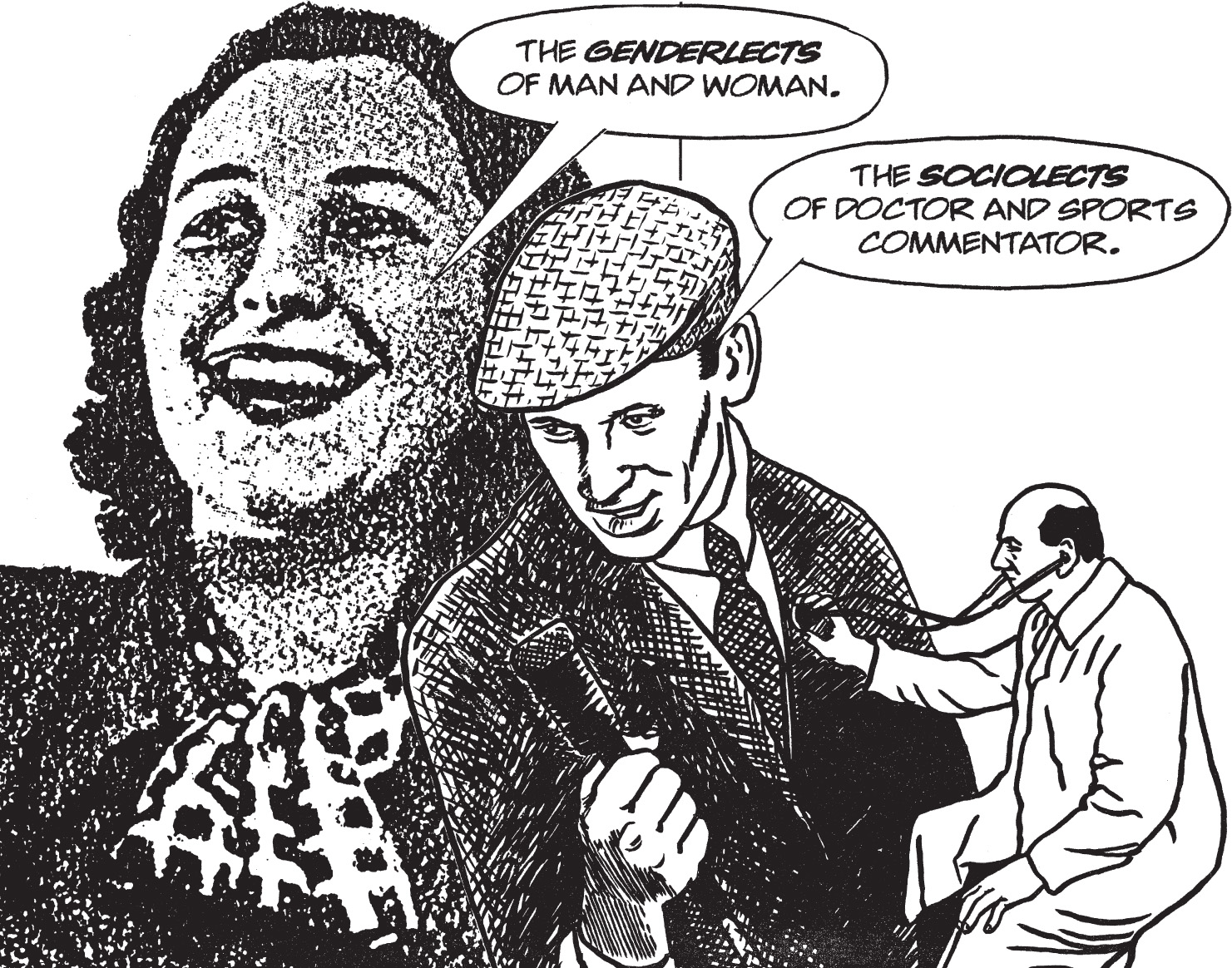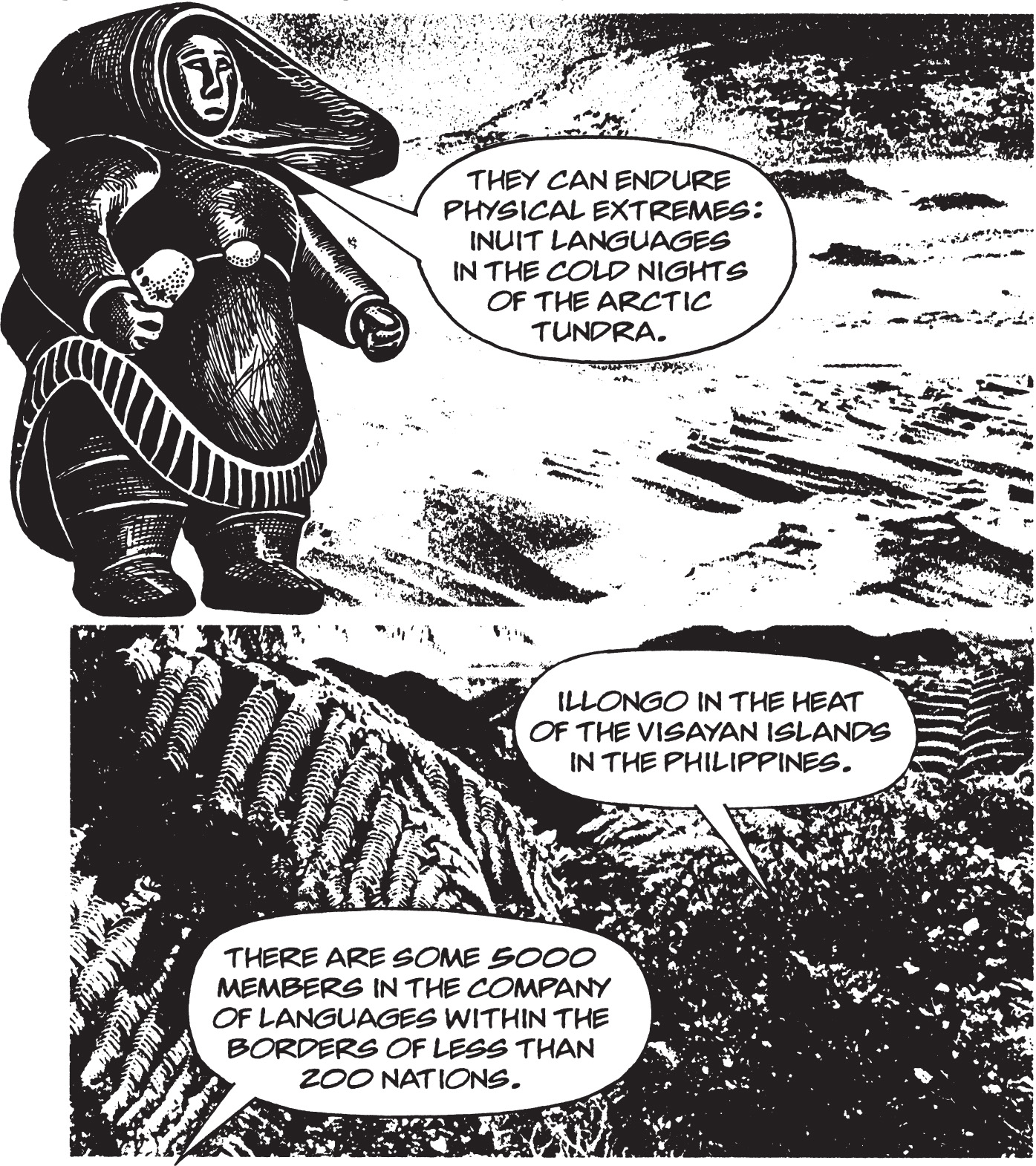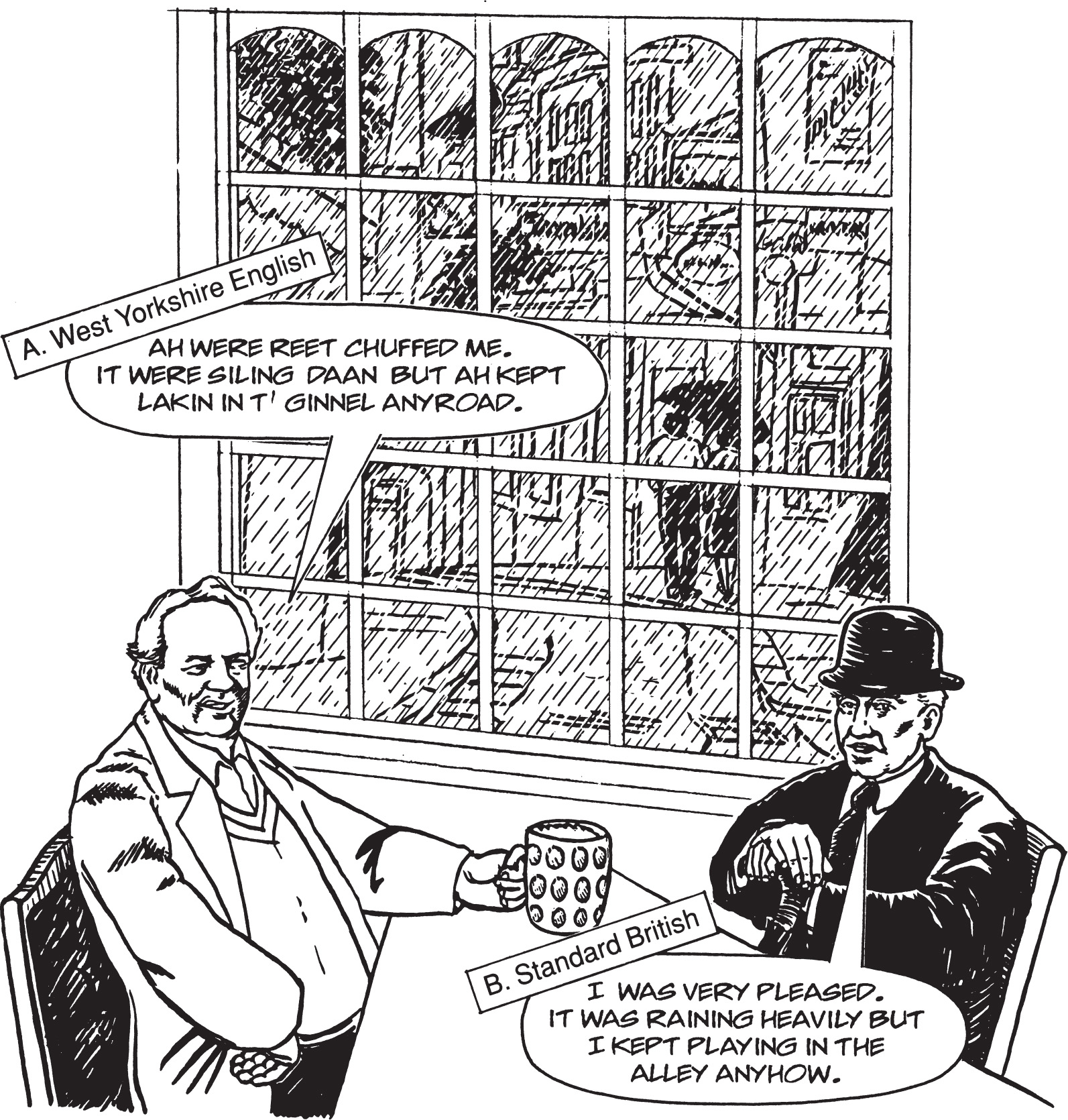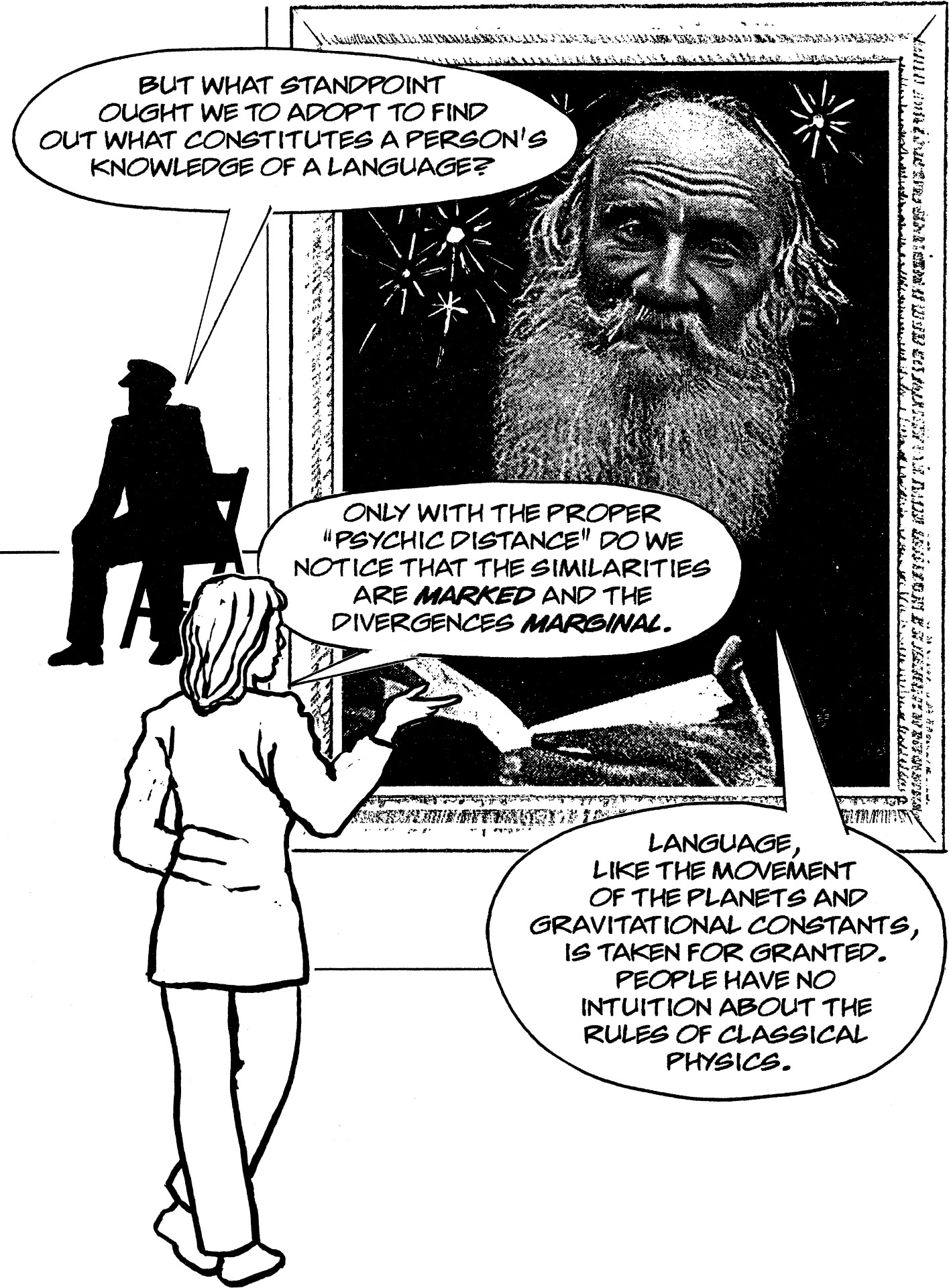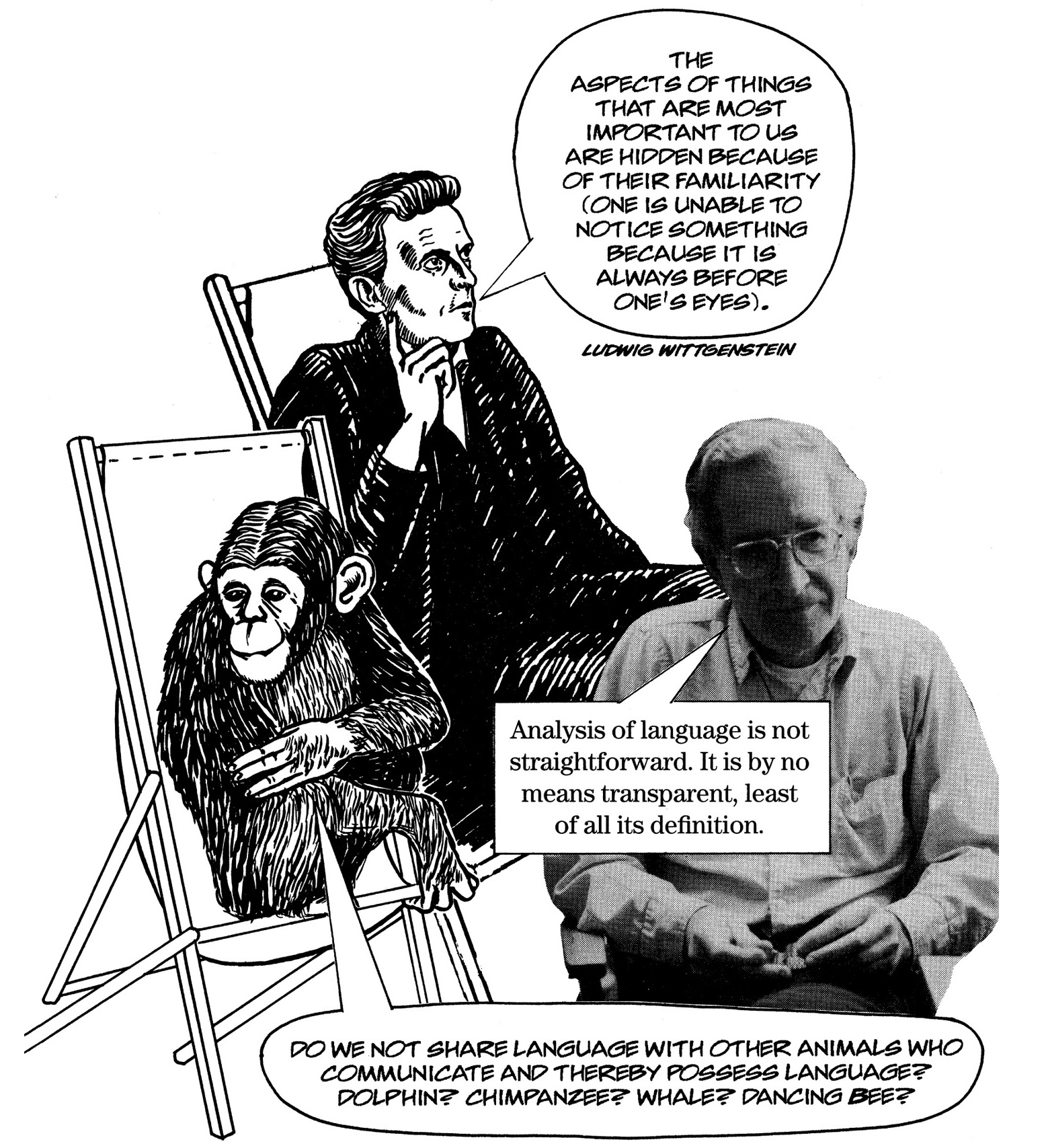Contents
Published by Icon Books Ltd, Omnibus Business Centre, 3941 North Road, London N7 9DP
Email:
www.introducingbooks.com
ISBN: 978-1-84831-294-4
Text copyright 2012 Icon Books Ltd
Illustrations copyright 2012 Icon Books Ltd
The author and illustrator has asserted their moral rights
Originating editor: Richard Appignanesi
No part of this book may be reproduced in any form, or by any means, without prior permission in writing from the publisher.
Introducing Chomsky
Noam Chomskys significance as a linguist and social reformer makes him one of the 20th centurys most challenging figures.
YOU HAVE ARGUED THAT THE STRUCTURING PRINCIPLES OF HUMAN LANGUAGE ARE INNATE. THIS IS STILL A CONTROVERSIAL IDEA.
It is. In my view, the human brain has an innate language faculty and part of this biological endowment is a system of principles common to all languages, which is the topic of the theory of Universal Grammar.
There are two Chomskys. One has introduced new perspectives on language and human creativity; the other has rigorously criticized social injustice and state violence wherever these occur in the world. Both Chomskys can be seen as one and the same heir to the Enlightenment tradition. Lets begin with Chomsky the linguist.
Being and Language
Language is our humanity. Language is used to understand ourselves and others, to deal with the reality of our world and engage in acts of meaning.
LANGUAGE SEEMS TO DO THE JOB FOR US. IT SEEMS JUST RIGHT.
The task of linguistics is to provide deep account of human language.
The Language Bell
Language is like a bell. It sounds and it means. Sound is the external face of language. It is merely a series of disturbances in the air. The cluster or sequence of sounds,
BONNE NUIT
O-YASUMI NASAI
in Japanese mean nothing in themselves. When language gongs, it comes into contact with the mind. The sound carries internal meanings which are present to the mind (Its 6pm. Time to go home). Thus, we see the interface between how the sound is represented, Phonetic Form (PF), and how the meaning is represented, the Logical Form (LF). Syntax (an intervening structure) connects the two.
What is the nature of the bridge between sound and meaning, and how does a child manage to acquire the syntactic interface?
Language Use
Language is textually complex, ranging from thousands of floating uh, huh conversational fillers to massive narratives which encode philosophical thoughts and powerful emotions.
WITH ONE BRIEF SPEECH ACT, WE CAN BE LEGALLY MARRIED, LAUNCH AN OCEAN LINER OR CONDEMN A PERSON TO DEATH.
We each have a highly personal way of using language (idiolect) in a speech community which displays regional characteristics (dialect). Likewise, we are hooked up to multiple stylistic networks.
THE GENDERLECTS OF MAN AND WOMAN.
THE SOCIOLECTS OR DOCTOR AND SPORTS COMMENTATOR.
The changing language of the I as it journeys from infancy to old age.
How Do We Know Language?
Speakers of languages constantly cross paths, borrowing and switching. Sometimes new types of makeshift mixed languages occur, like pidgins, which when stabilized, become creoles. Through their channels of speech, writing and sign (deaf-sign), languages traverse great distances throughout time and space.
THEY CAN ENDURE PHYSICAL EXTREMES: INUIT LANGUAGES IN THE COLD NIGHTS OF THE ARCTIC TUNDRA.
ILLONGO IN THE HEAT OF THE VISAYAN ISLANDS IN THE PHILIPPINES.
THERE ARE SOME 5000 MEMBERS IN THE COMPANY OF LANGUAGES WITHIN THE BORDERS OF LESS THAN 200 NATIONS.
All these phenomena share in the form of life known as language.
What constitutes our knowledge of language? In order to answer this question, we must take several strides back from what is apparently present to the mind.
The Diversity Diversion
Language is so close to our Being that we frequently do not notice it. Bewildered by the differences found in language diversity and peoples ability to use a language, we pay little attention to potential similarities. For example, dialects A and B may be superficially remote the speakers may be almost unintelligible to each other.
AH WERE REET CHUFFED ME. IT WERE SILING DAAN BUT AH KEPT LAKIN IN T GINNEL ANYROAD.
I WAS VERY PLEASED. IT WAS RAINING HEAVILY BUT I KEPT PLAYING IN THE ALLEY ANYHOW.
These speakers in fact share a central core of common rules and processes. They both know the same language.
Getting to the Core of Language
The underlying structures of language may be invariant sleepers over long historical eras. The common core of the language very rarely changes.
BUT WHAT STANDPOINT OUGHT WE TO ADOPT TO FIND OUT WHAT CONSTITUTES A PERSONS KNOWLEDGE OF A LANGUAGE?
ONLY WITH THE PROPER PSYCHIC DISTANCE DO WE NOTICE THAT THE SIMILARITIES ARE MARKED AND THE DIVERGENCES MARGINAL.
LANGUAGE, LIKE THE MOVEMENT OF THE PLANETS AND GRAVITATIONAL CONSTANTS, IS TAKEN FOR GRANTED, PEOPLE HAVE NO INTUITION ABOUT THE RULES OF CLASSICAL PHYSICS.
Perhaps literature will forever give far deeper insight into the full human person than any model of scientific inquiry can hope to do. Chomsky
How Do We Explain Language?
Too often we prefer transparent explanation, near to the surface. The classical philosophy of the mind both rationalist and empiricist is deeply flawed in its assumption that the content of the mind is accessible to introspection.

